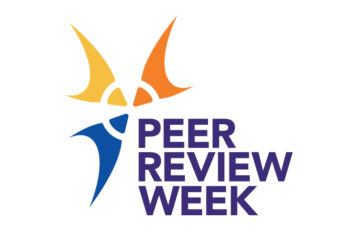Several weeks ago, the Internet Archive lost its appeal of the lawsuit brought by a group of publishers opposed to its controlled digital lending programs. Controlled digital lending (CDL) was developed as a concept within the library community and promoted by a group of lawyer librarians and policy advocates. It has been embraced and supported by mainstream entities within the community such as Boston Libraries Consortium, HathiTrust, IMLS, the Mellon Foundation, and NISO. How did the library community come to embrace so fully a service model based on a legal theory that appears to have failed so easily in the federal courts? And what lessons can we learn from this approach to service development?

Controlled Digital Lending
Controlled digital lending is a service framework built around the legal theory that fair use allows libraries to scan a book owned in print and lend out the digitized version. Several different flavors of the service model have developed, but the flavor that has gotten most attention is one in which the library or service provider lends one digitized copy per copy of the print book it has bought and “sequestered,” a so-called “one-to-one owned-to-loaned ratio.” Although in all flavors the theory is that copyright owner permission is not needed, there are various ways that digitized versions can come into library possession, for example through copying each book that has been sequestered or through a shared enterprise.
The Internet Archive has used several flavors of Controlled digital lending, including one at the height of the pandemic that provided access to all scanned books for unlimited users. The flavor in question in this decision, however, was somewhat more narrowly tailored. The litigation was about a model in which IA scanned books without copyright owner permission to lend them on a sequestered one-to-one basis to registered users anywhere in the world. Last year, following oral arguments on a preliminary motion, the federal district court ruled with remarkable speed in favor of the publishers. And in early September, the Second Circuit Court of Appeals affirmed the lower court’s decision, ruling that this model of CDL is not a fair use.
The Internet Archive may yet appeal the ruling to the US Supreme Court, but few even-handed copyright attorneys seem to believe that, even if the case were accepted, there would be any real likelihood of it being overtuned. And, in parallel, the publishers and the Internet Archive have agreed to a settlement, pending the appeals process, in which the Internet Archive will cease providing digitized books via controlled digital lending, at least for the materials that are commercially available in electronic form.
This settlement allows the Internet Archive to avoid the full financial penalties that some feared could be an existential threat to its societally important web preservation work. At the same time, some believe the settlement does not provide a sufficient disincentive against future actions by Internet Archive or others to test the boundaries of copyright through assertions of fair use. This is all notable given another case running in parallel, in which a group of record labels is suing the Internet Archive on a somewhat similar basis.
Policy and Advocacy
I am sympathetic to the dilemmas that have driven libraries towards controlled digital lending. As I have written in these pages previously, in segments such as trade publishing and streaming media, “libraries find themselves with far less ability to freely lend, or effectively preserve, the cultural record…Librarians are understandably frustrated by this state of affairs and have legitimate concerns about preservation and broad public access. They see too little support from the copyright industries in support of these societal goals.” I also suspect there can be limited and targeted uses of certain flavors of controlled digital lending, for example when I praised HathiTrust during the pandemic for its Emergency Temporary Access Service, which allowed access in the case of involuntary and temporary disruption to a bona fide library’s tangible holdings.
But supporters for CDL within the library have advocated for more comprehensive access, asserting that fair use allows libraries to purchase a single print copy, scan it, and lend it broadly. Two lawyer librarians wrote a foundational piece promoting CDL in which they walked through risk mitigation approaches for libraries, well aware that various kinds of legal challenges and potentially litigation could result. A number of major library organizations, including the Association of Research Libraries, signed on to a statement promoting CDL. The Mellon Foundation provided funding to NISO for the creation of “a consensus framework for implementing controlled digital lending.” The Boston Library Consortium announced it would implement CDL and was awarded funding by IMLS to develop infrastructure and policy to support further implementations. While there were voices advising caution, these were not prominent within the library community discourse and largely lost in the push towards adoption.
Lessons to Learn
Recognizing the latest legal defeat, leaders have quietly acted, in several cases, to unwind CDL initiatives. On a technical level, I have found myself asking, what is left for controlled digital lending if it cannot apply to in-copyright works? A substantial amount of investment has been made in systems and workflows in support of CDL, far more than would be merited for emergency use or for materials that are out of copyright or otherwise free to access. Beyond these questions, I would like to step back and reflect on what we can learn here.
First and foremost, policy advocacy and a fair use strategy are entirely different enterprises. Policy advocacy involves lobbying and persuasion, where rallying cries and overstated claims can be effective tactics to build alliances and advance an agenda. A fair use strategy, on the other hand, involves calculated risk taking in the face of reliable and neutral legal analysis. If leaders in the CDL movement received reliable and neutral legal analysis on which to base their risk-taking, that would have happened behind closed doors and not necessarily in the public eye. But they should remember that legal bloggers and lawyer librarians may not always have the same amount of direct skin in the game themselves, compared with the attorneys and policy advisors to the copyright holders, who must calculate business and reputational risks associated with litigation.
Going forward, legal analysis needs to account for the recent decisions. For example, one prominent lawyer librarian suggests that the ruling only applies in the Second Circuit and that CDL remains legal for books that are not commercially available. Is this analysis reliable and neutral if publishers are prepared to litigate across the country as needed and vehemently object to this interpretation about commercial availability?
While the fair use approach experiences substantial setbacks, other strategies might be worth contemplating. In the public library sector, although the models are not perfect, services like OverDrive have proved very successful with end users. And the Palace Project has developed as an effort to push even further. To be sure, libraries do not have the same amount of market power in consumer segments such trade publishing and streaming media as they do in scientific journals, where through licensing they first secured unlimited usage site-license models, and more recently used that market power to flip subscriptions to transformative open access models. Without this degree of market power, could libraries seek compromises that work in the best interests of consumer businesses such as book publishers, while at the same time addressing fundamental unmet needs for access and preservation?
And, finally, libraries might recall that policy interventions that start from the source of funding — whether in close partnership with government funding agencies or using library dollars for example with subscribe to open models — have steadily expanded open access. Perhaps there is more that libraries can achieve through legislative or regulatory action or business model innovation to expand the opportunities to bring book ownership models into the digital age?
Discussion
10 Thoughts on "Lessons Learned from a Fair Use Defeat"
it was entirely the internet archive’s fault. I don’t wanna side with the publishers but if a library started copying books and distributing them on mass without permission from a publisher they’d get in trouble too. why would the IA be special here?
Hi Roger, I’m very interested in this: “Recognizing the latest legal defeat, leaders have quietly acted, in several cases, to unwind CDL initiatives.”
I have heard from a good number of librarians about their CDL initiatives, and for the most part the people I’m hearing from are planning to continue despite the Hachette decision. I’m wondering if any of those that are pulling back have said so publicly? I’d be interested to hear their rationale.
Hi Dave, I think the reason folks are acting quietly is because they are trying to avoid publicity, so I don’t want to complicate their efforts to thread a needle for their communities. My sense of the rationale is that CDL is not winning in the courts. Probably many others are still trying to figure out what to do.
Some economical background regarding CDL:
https://www.diw.de/documents/publikationen/73/diw_01.c.912941.de/diwkompakt_2024-201.pdf
Perhaps Congress could make changes to the copyright law to affirm that materials that are not already for sale digitally could be legal via CDL. Many years ago at the Charleston Conference, I asked this question about current materials because I believe, I think correctly, that current copyright law doesn’t include date restrictions other than how long copyright law applies. If it is legal to apply CDL to a 1935 book, the same would be true for today’s best sellers. I don’t know if the publishers made this argument, but it has financial implications. Digital copies don’t wear out or get stolen and thus don’t need to be replaced. The ten digital copies can last forever while the ten physical copies might need to be replaced by additional purchases and thus create more revenue for the publishers. I see this reasoning as a business justification for charging more for digital.
I’ll add that I was politely told to shut up and sit down when I asked this question in Charleston.
When the Copyright Office solicited public comments on changes needed to copyright law in light of mass digitization and the problem of orphan works some time ago, I submitted comments arguing for a new library exception to copyright law that would allow something analogous to what has since come to be called CDL – i.e. that would allow libraries to lend copies of digitized books in their collections under certain conditions – but with policy guardrails that protected the commercial interests of publishers and authors. I still think that a carefully crafted exception along these lines would be a preferable solution. But of course I appreciate that opening up the library exceptions in copyright law to any sort of revision poses other risks and challenges, so that train is going nowhere fast.
Roger, I’m struck by your comment “On a technical level, I have found myself asking, what is left for controlled digital lending if it cannot apply to in-copyright works?”
Saying that “controlled digital lending … cannot apply to in-copyright works” seems over broad. Wouldn’t a better simple summary of the decision be to say that controlled digital lending generally will not apply to works that are *commercially available*? That still leaves millions of in-copyright but out-of-print or potentially even in-print but never-produced-in-E titles, right?
Thanks Roger,
Micah
Hi Micah, Thanks for reading and for your question. I wasn’t trying to summarize the opinion in that section (I did so in the previous section) but rather to move into a discussion about what lessons can be learned and what comes next. Indeed, if a library wishes to test the boundaries of fair use in the places where the decision is silent, it absolutely has the ability to do so, and I discussed this issue a bit in the following two paragraphs. Is it your opinion that libraries should do so? Do you think they will win in court? I have no point of view on this of my own.
CDL of in copyright works that are not commercially available in a digital format could be an interesting area to explore, particularly if the program was designed to include research objectives.
For example, could CDL be useful in demonstrating demand for ebooks of older materials in specific subjects or genres, stimulating publisher interest in securing rights and publishing commercial digital editions? A library with an extensive collection of paperback 1940s westerns, 1960s gothic romances, 1950s pulp sci-FI novels, etc, might design a CDL program around that collection. Older genre fiction published in paperback is not likely to be widely available and is likely to be fragile. CDL would make such a collection more available without risking fragile paperbacks.
Risk mitigation is an issue. One possibility might be including a take down process, where a rights holder could notify the library that their content should be removed from the CDL program. The library might also make use data freely available, so rights holders and commercial publishers could assess the potential market for commercial ebooks. Ideally, this kind of project would involve multiple libraries using the same portal so people only have to search one place.
The future of CDL depends on us all. My response to ‘Lessons Learned from a Fair Use Defeat’ highlights why collective action is critical to shaping the future of library collections.
Let’s move forward together.



